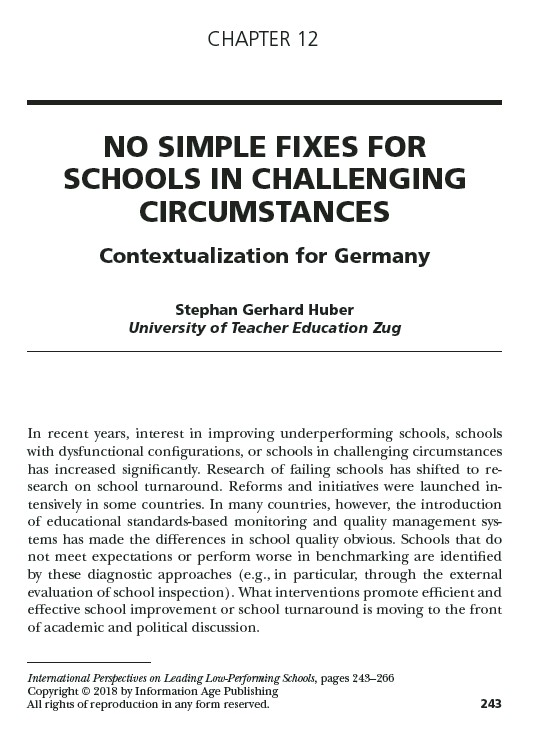No Simple Fixes for Schools in Challenging Circumstances
Autor(en)
Herausgeber
Erscheinungsjahr
Titel
Untertitel
Erschienen in
Form
Verlag
Abstract (long)
In recent years, interest in improving underperforming schools, schools with dysfunctional configurations, or schools in challenging circumstances has increased significantly. Research of failing schools has shifted to research on school turnaround. Reforms and initiatives were launched intensively in some countries. In many countries, however, the introduction of educational standards-based monitoring and quality management systems has made the differences in school quality obvious. Schools that do not meet expectations or perform worse in benchmarking are identified by these diagnostic approaches (e.g., in particular, through the external evaluation of school inspection). What interventions promote efficient and effective school improvement or school turnaround is moving to the front of academic and political discussion.
This topic is also increasingly on the agenda in German-speaking countries. Some German federal states, such as the city states of Hamburg, Bremen, and Berlin, have already addressed this issue and started projects to develop support measures. Moreover, the need for successful quality development also arises in other German federal states, as well as in other German-speaking countries such as Austria, Liechtenstein, and Switzerland. In Switzerland, for example, I chaired a summer symposium in 2009 for the cantonal cadre association of the German-speaking and multilingual cantons that also focused primarily on school turnaround. The fact that the topic of “school development in schools in challenging circumstances” affects not only the organizational level but also the system level becomes particularly clear from the findings of previous research and evaluation projects internationally. This is also reflected in the fact that the school administration or the school authorities are increasingly turning to this topic, including not only “school turnaround” but “district turnaround.”
This chapter reviews international efforts on school turnaround, identifying areas that are key to supporting leaders trying to lead such challenging work. Then the chapter identifies characteristics of German approaches that are similar and different. The chapter concludes with recommendations contextualized for supporting school turnaround in Germany.
